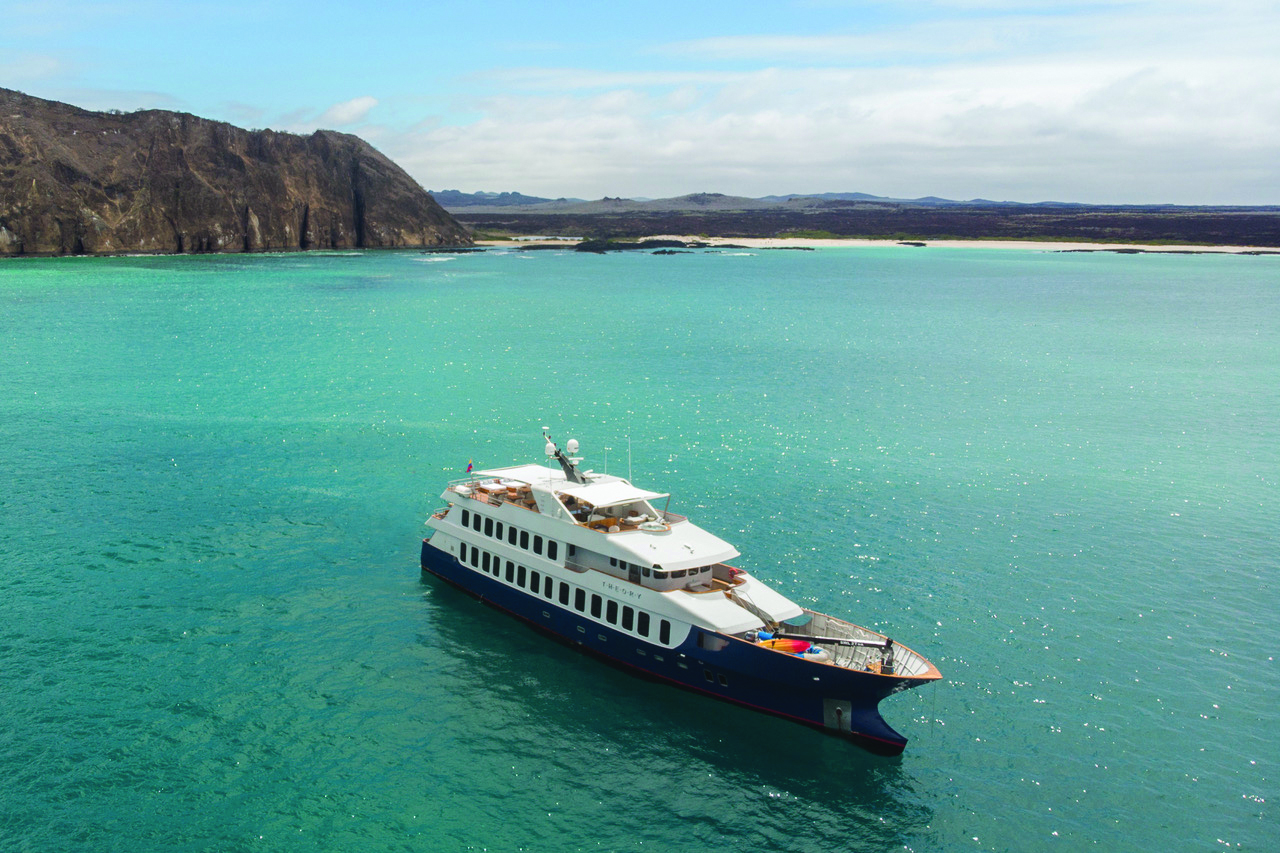Exploring Gorgeous Galápagos Aboard The Ecoventura ‘Evolve’ Yacht
A luxe 142-foot adventure ship transports passengers to the uncolonized archipelago teeming with exotic wildlife.
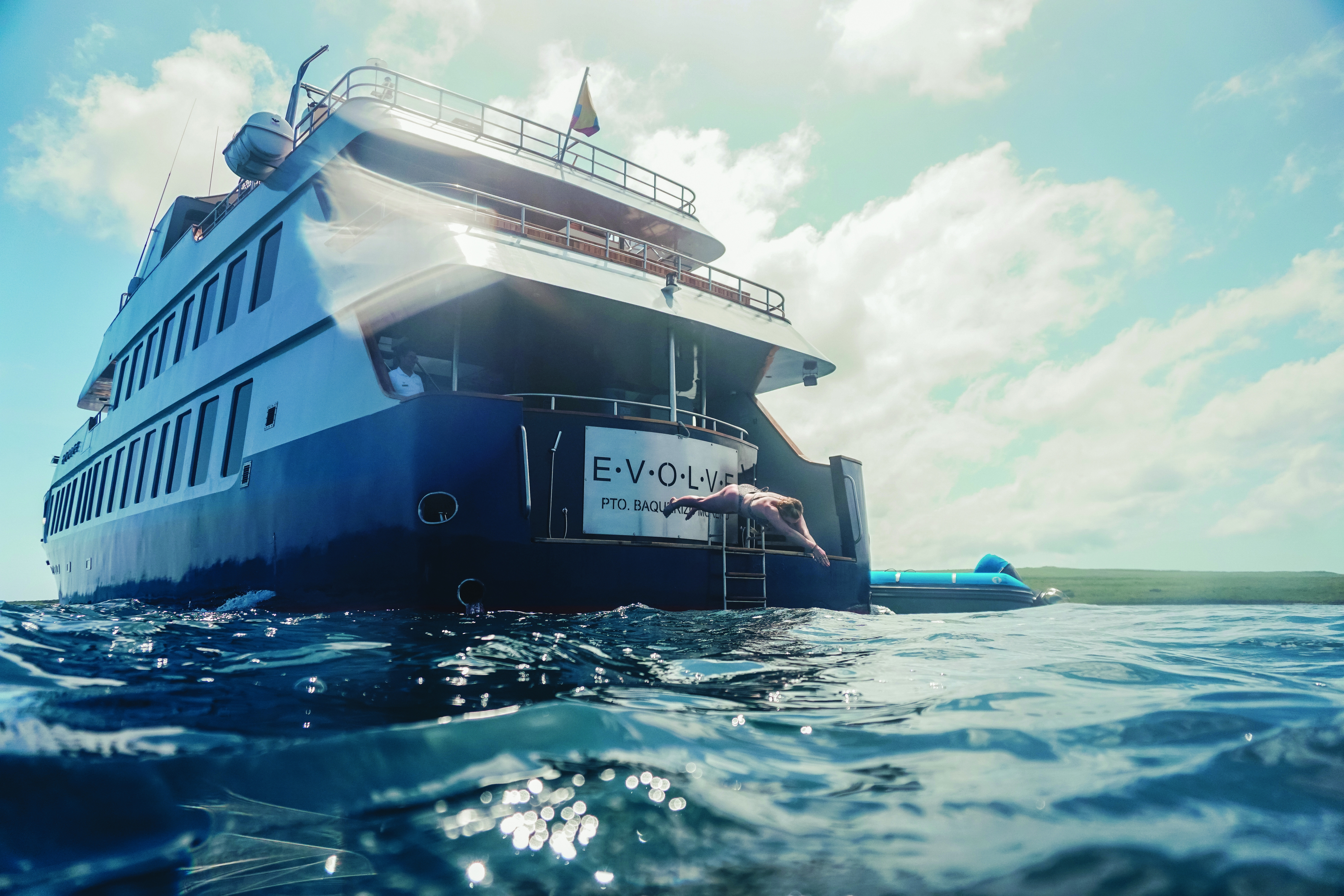
If I wasn’t here witnessing this scene with my own eyes I would not believe it possible. We’ve dipped into a small cove at Pitt Point, swimming deeper into the warm equatorial water till we’re encircled by the Galápagos’ famed black volcanic rock.
“I have always felt that there is something about natural beauty that elevates the human spirit, and nowhere is this more true than in the Galápagos Islands, where nature is so raw and unspoiled.”
Charles Darwin in a letter to J.D. Hooker, 1845
Splashing in the tropical Pacific a group of sea-lion pups wrestle nearby, honing fighting skills they’ll lean on when they mature and need to protect their turf. A large adult swims disturbingly close and circles us in the clear aquamarine water, curious and utterly unafraid.
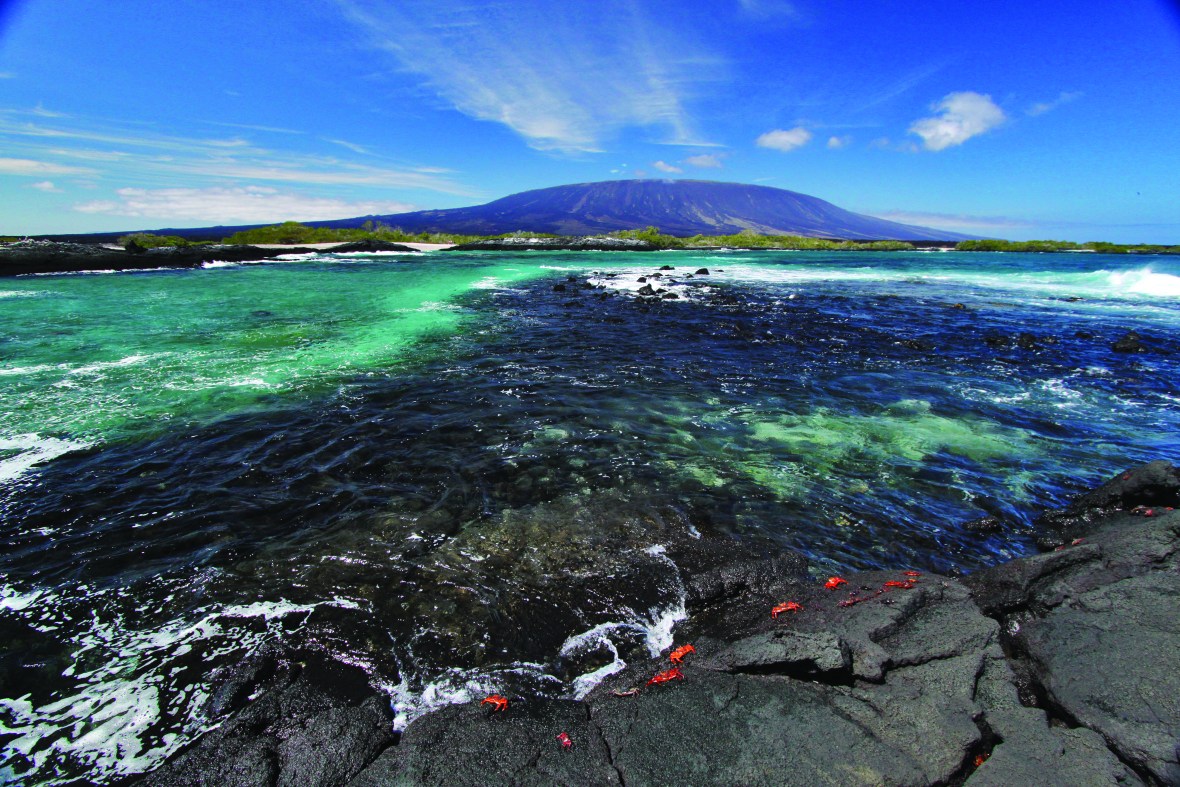
Giant crimson crabs crawl up from behind rocks, their bright teal- and gold-patterned scarabs glistening in the sun. Then a marine iguana, as black as the lava he sunbathes on, makes his debut. Or has the miniature Godzilla been there the entire time, impeccably camouflaged against the basalt rock?
Meanwhile overhead a large frigate bird glides on the breeze, its pronounced silhouette so stylized and well-designed it looks like a corporate logo against the azure sky. Suddenly a blue-footed booby dive bombs for an unlucky fish, splashing victoriously not five feet away.
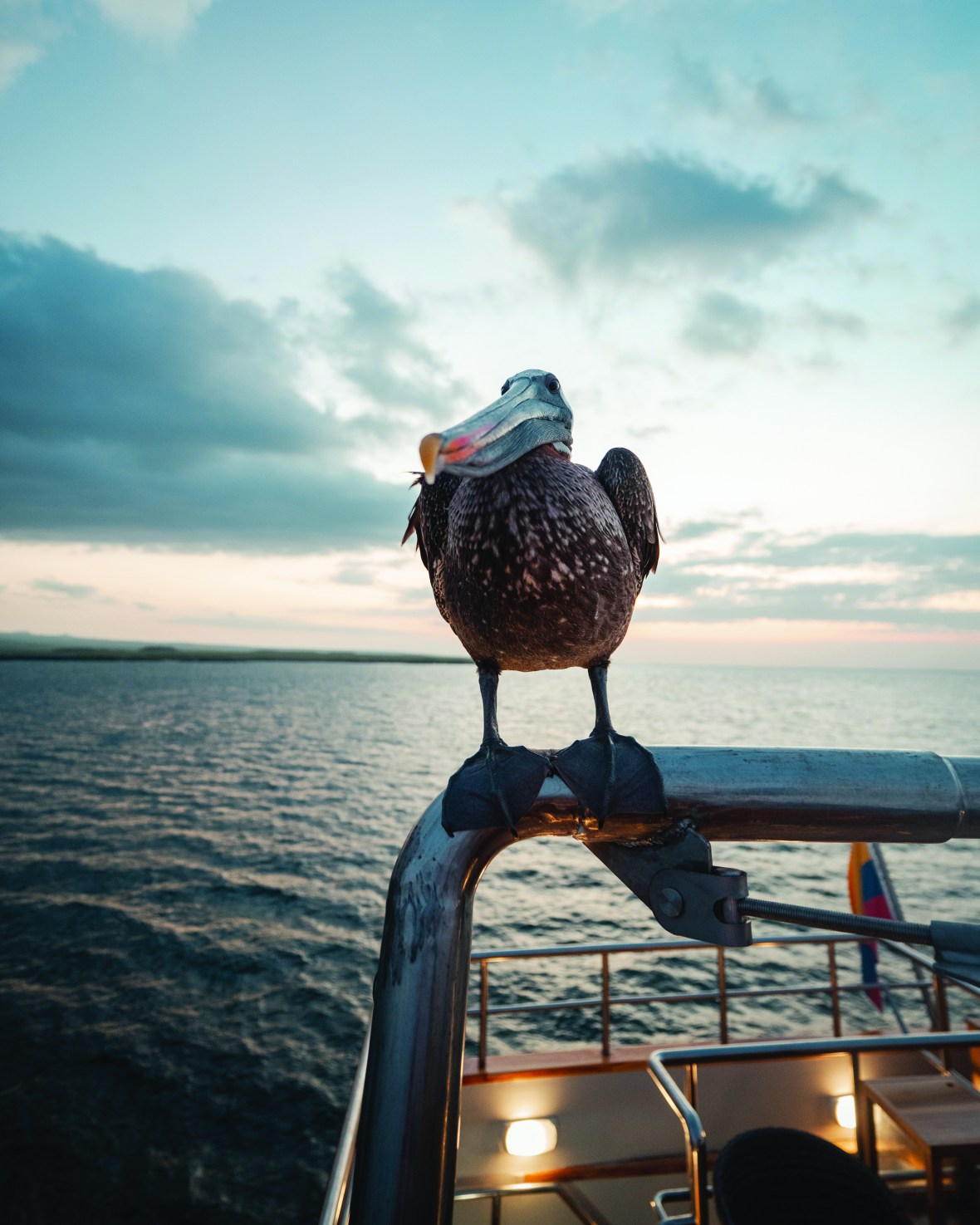
Here on the island of San Cristóbal and beyond, the entire Galápagos archipelago feels like a living menagerie. Like walking invisible in an open-world zoo—one where animals both regal and absurd are allowed to roam free, and humans are confined to restricted areas.
Only in Disney cartoons do animal and man coexist with such mutual understanding. I half expect a scarlet macaw to land on my shoulder and start squawking about Aladdin in Gilbert Gottfried’s voice.
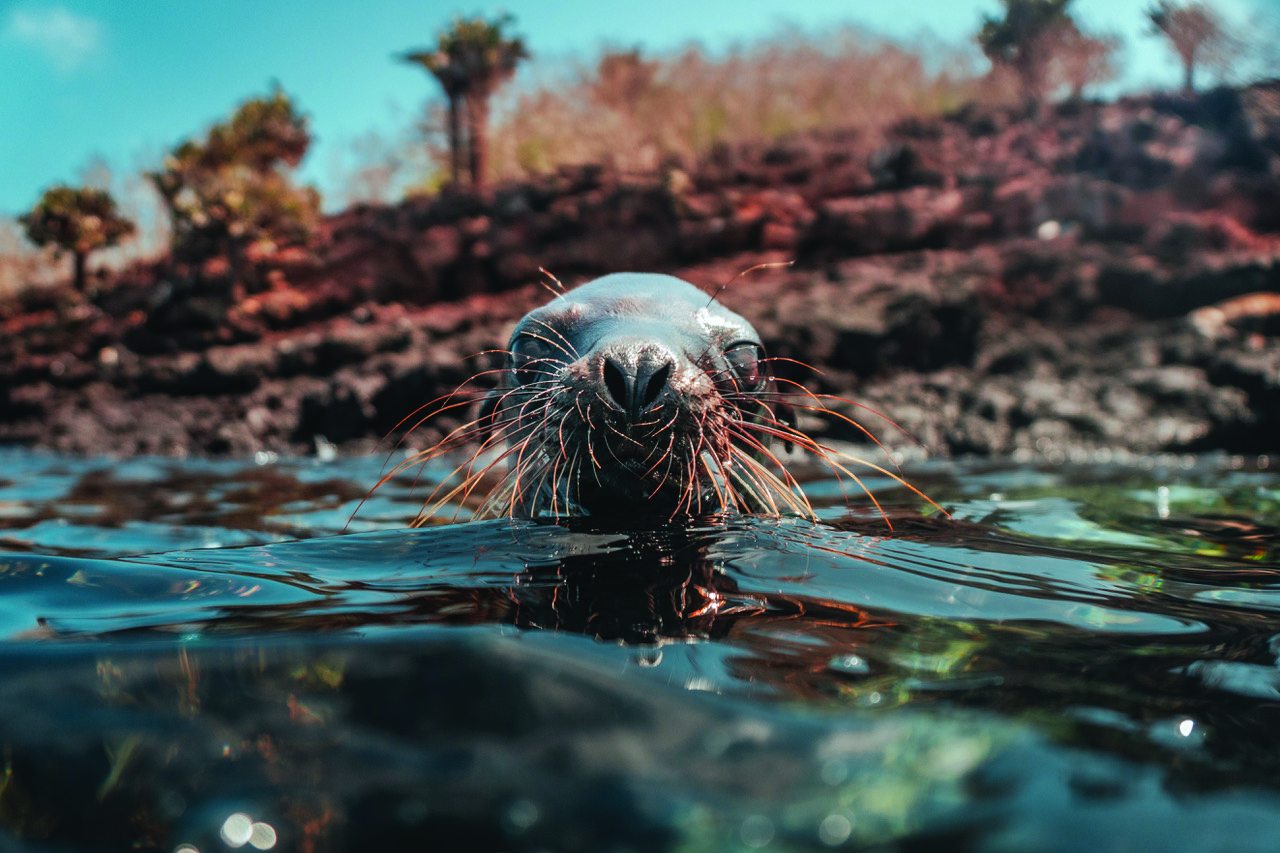
The location is not just spectacular, it is singular. Consciousness shifting. These thoughts hit you with immediacy the moment you step ashore: first the astonishment at the sheer volume and interaction of wildlife. Second the stark hostility of the place. These islands do not want you here, and they make that quite clear.
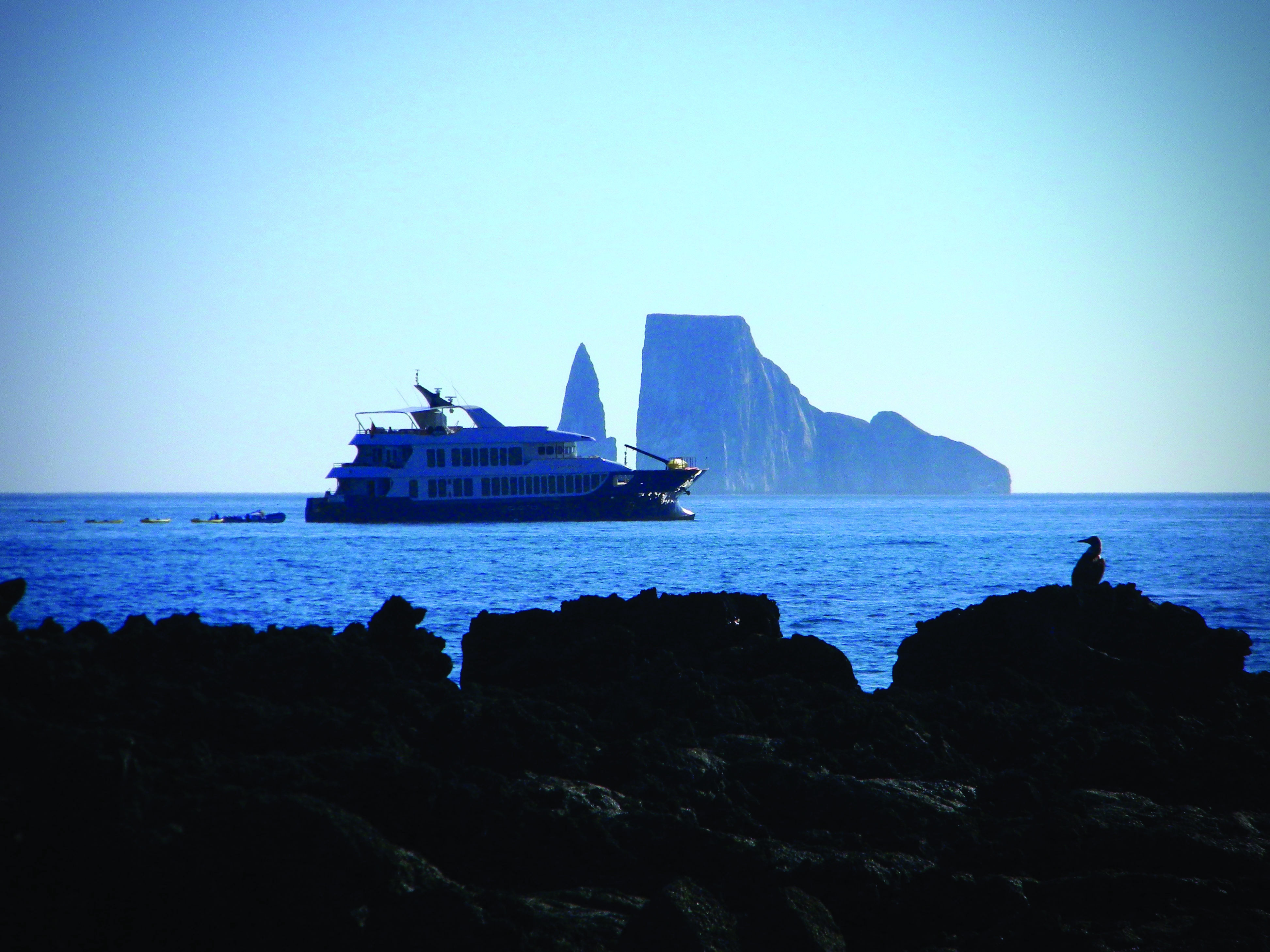
Factor in the heat: an equatorial sun scorching lasers onto any patch of exposed flesh, searing it like a prime A5 Wagyu in minutes. Then there’s the water, or rather lack thereof. Of all the islands only two boast any semblance of sweet water to quench thirst or refill barrels.
No fruit-bearing trees spring from the volcanic dust. Flora bristles with spines—cacti, shrub and tree—inimical in nearly every way. Little refuge exists in the inhospitable expanse.
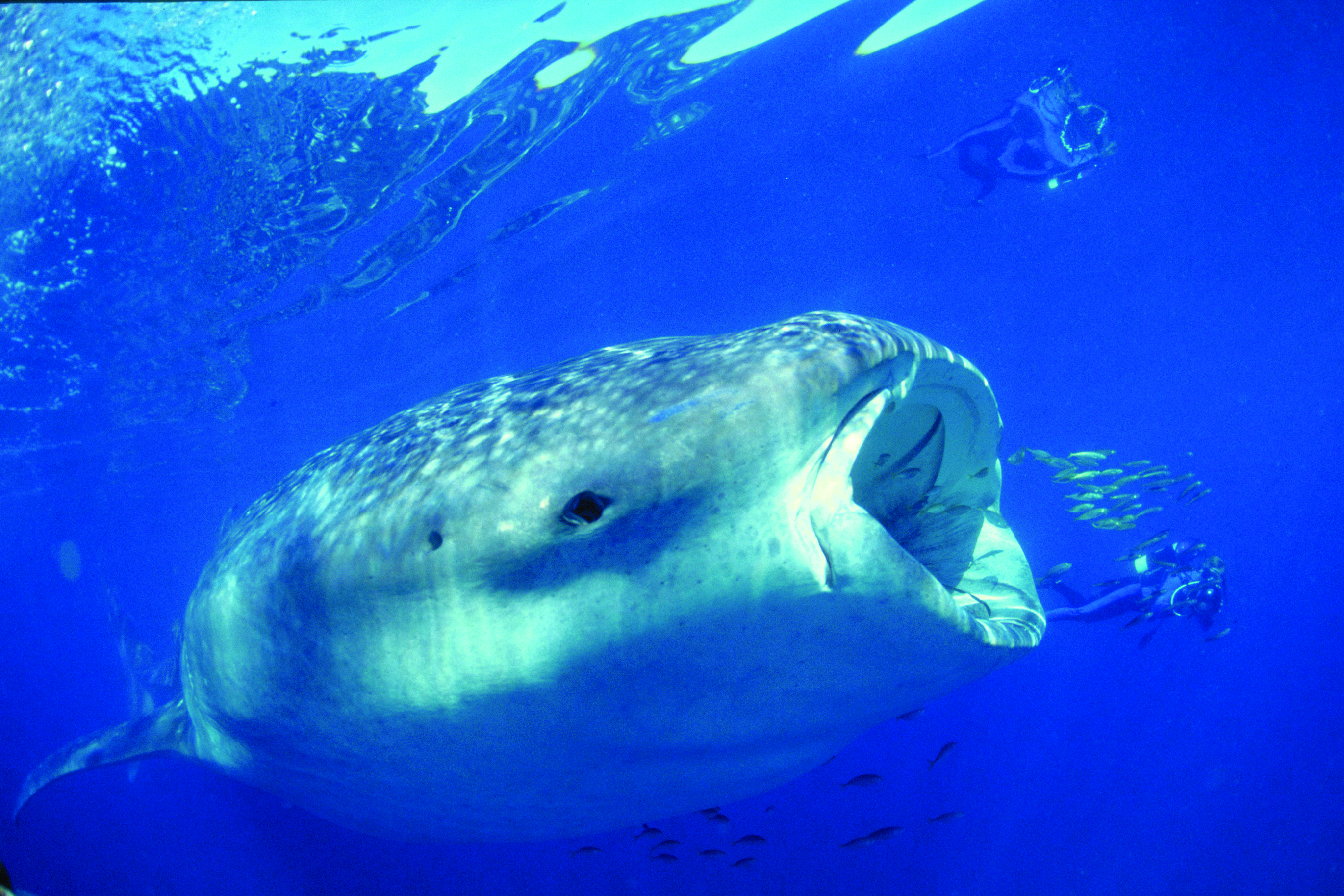
But by God is it beautiful. You can thank this ruthless brutality for the archipelago’s pristine state—it feels like it’s time-warped from the Cretaceous era. Over centuries wave after wave of human colonizers have attempted to settle this pitiless land, and time and time again the Galápagos have murdered them in their sleep or sent them home, broken and defeated.
Like walking in an open-world zoo, only in Disney cartoons do animal & man coexist with such mutual understanding.
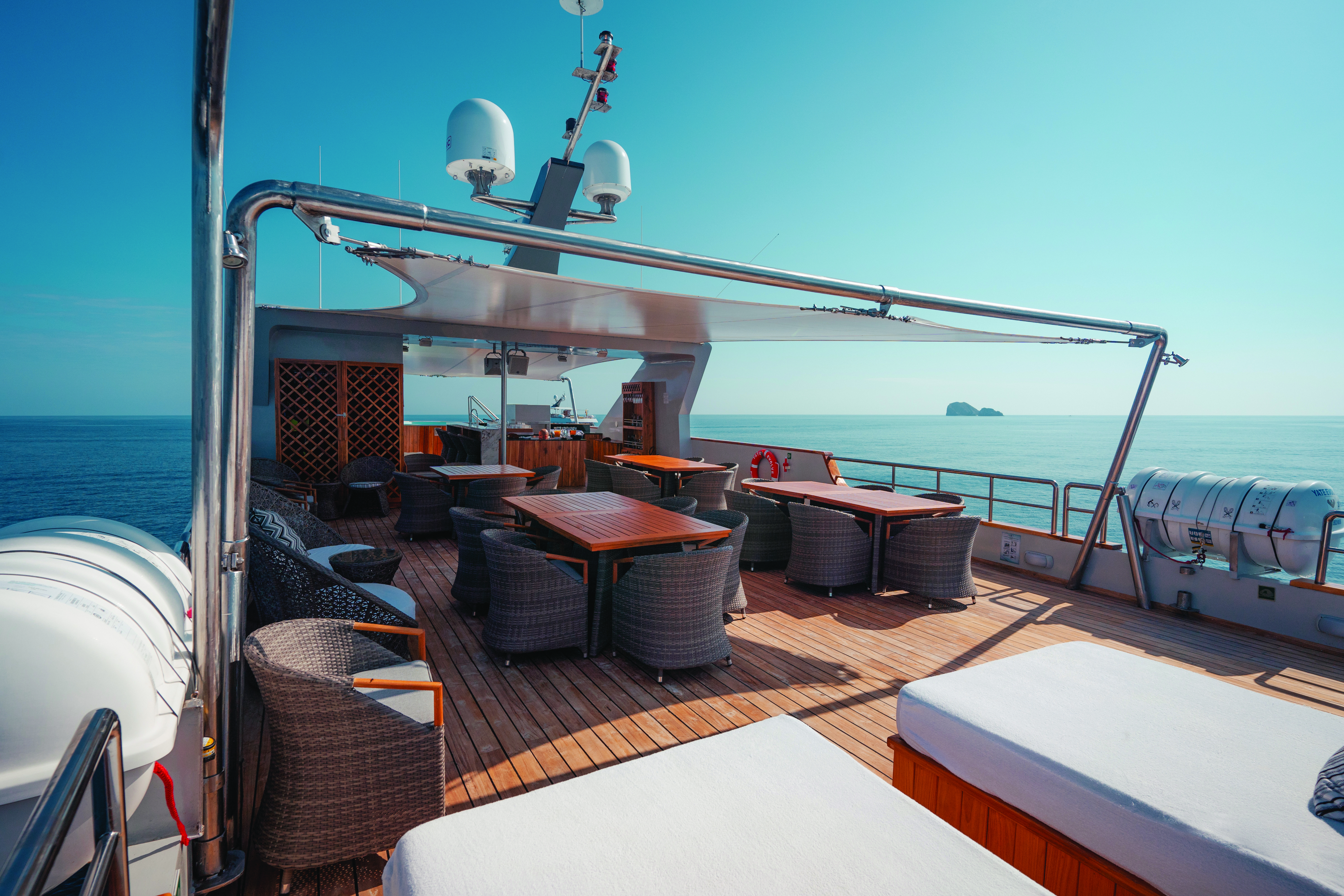
Sure this hostility to mankind has kept these islands lost in the fog of time, untouched—but it also makes exploring their depths in a vessel like the Ecoventura Evolve so critical. Some luxury adventure cruise-ships lean heavily on the adventure aspect. They’re trafficking you to exotic locations unreachable by other craft, so the experience is in the exploration—not necessarily the appointments.
Not Ecoventura, and certainly not in regards to the newest vessel in their fleet, which makes its inauguration this year. The Ecuadorian company outfitted the Evolve with every comfort you could realistically hope for on a boat that services such remote reaches.
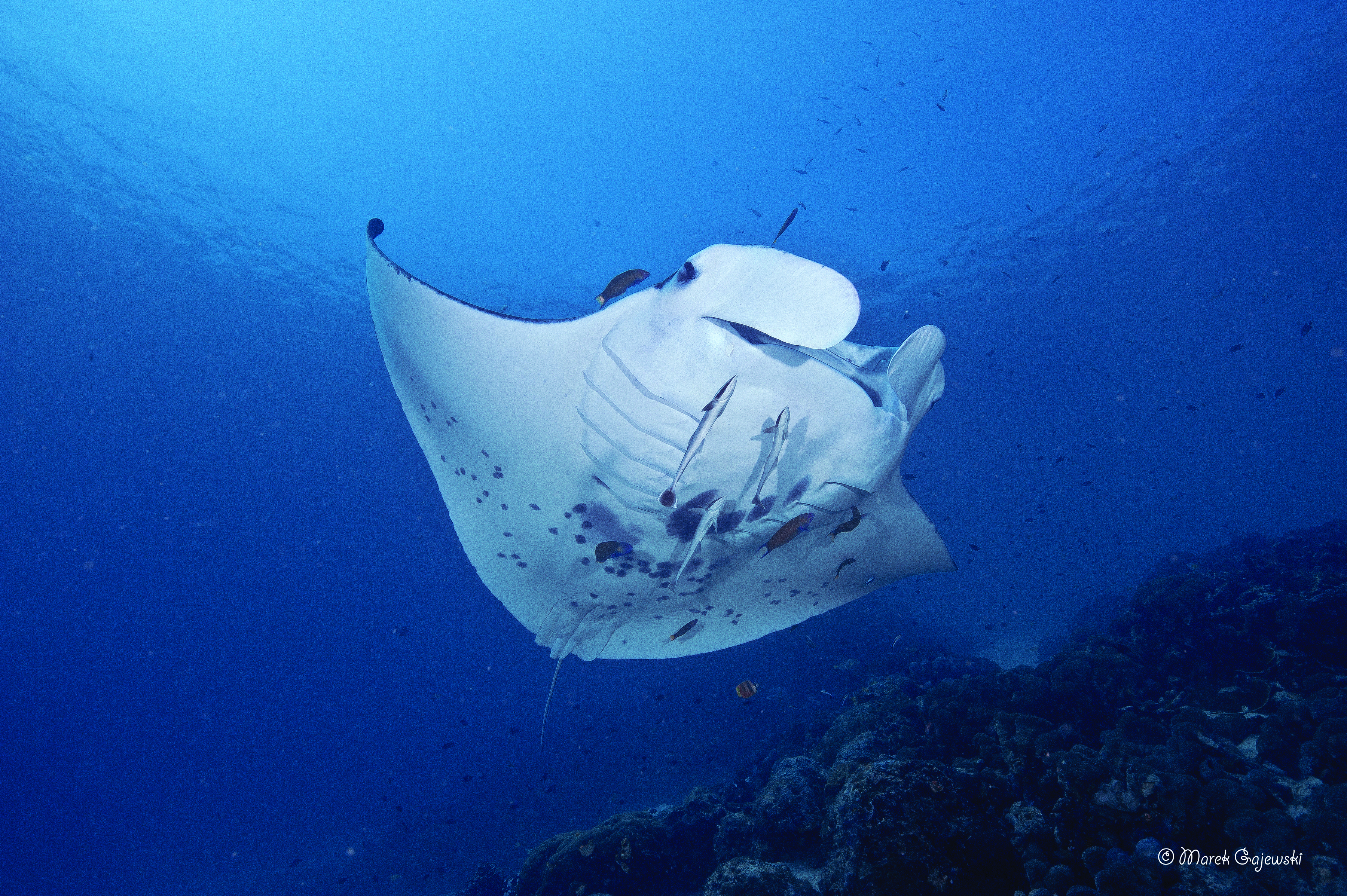
There are larger cruise ships that sail these waters, but the Evolve’s size—142 feet, and only ten cabins for 20 guests with 13 crew to support—feels ideal. Dinghies are easy to allocate, the dining room is capacious, one never feels the anxiety of crowds. It’s familial, yet as the only Relais & Châteaux property on the Galápagos, the Evolve’s luxury standards are sky high.
Large cabins, amply spacious for two to live comfortably, are cleaned three times a day. Day pillows are added and removed and sparkling water refilled while you blink. When not looking we caught the staff ironing the table linens, washing our cabin windows and even cutting the crusts off breakfast toast. The 24/7 satellite Wi-Fi is complimentary.
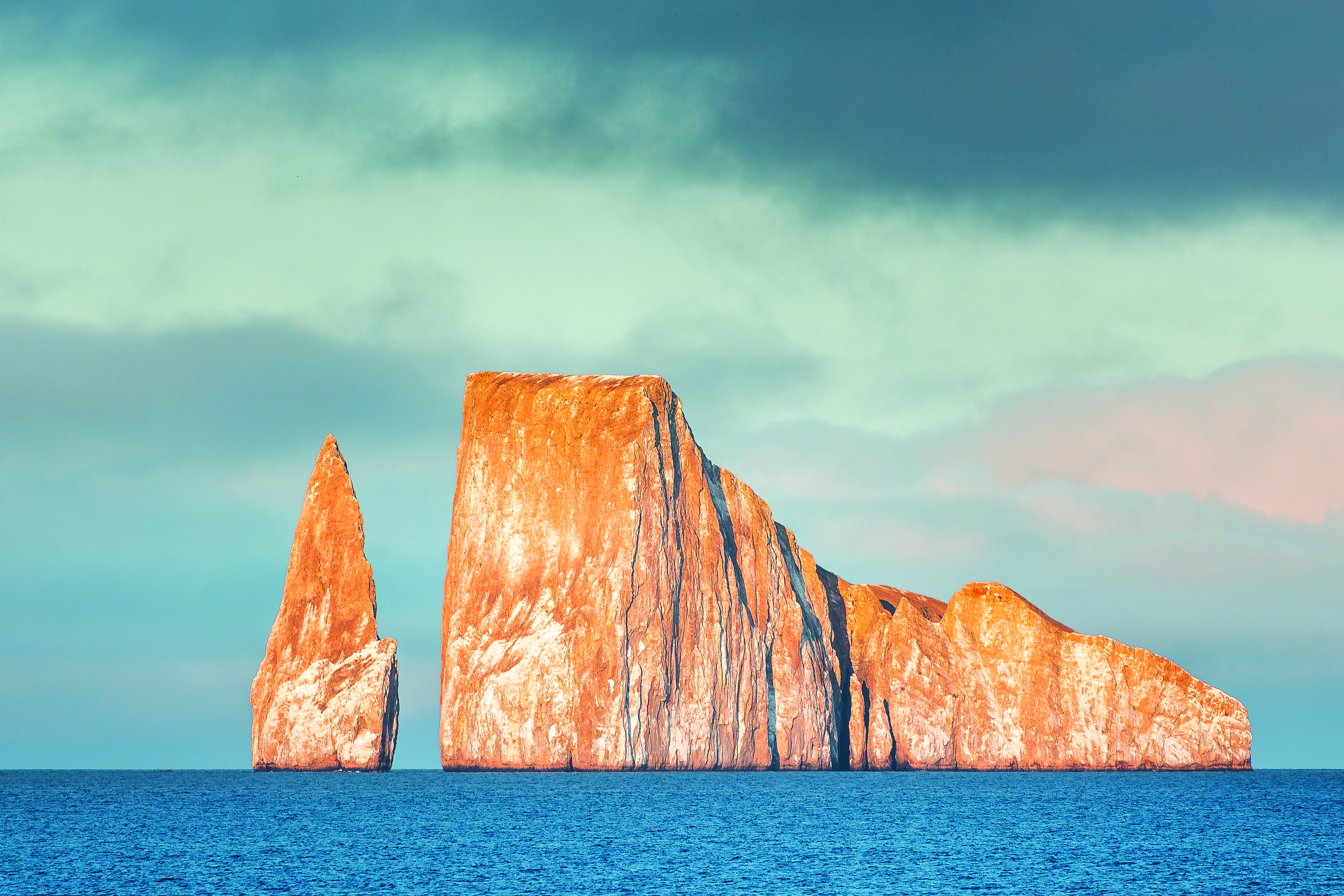
Nothing welcomes you home from an exhaustive hike or hours-long snorkel more lavishly than a steaming rainfall shower—and the Evolve’s marble bathrooms will provide plenty.
Luxurious design touches like exotic stone, agate-crystal bar tops lit from within, petrified-teak paneling, and modern furniture are complimented with a first-rate culinary program rich in local dishes like sustainably caught lobster, a garlic-heavy Ecuadorian ceviche called canchalagua, and plenty of craft beer and coffee sourced from nearby Santa Cruz.
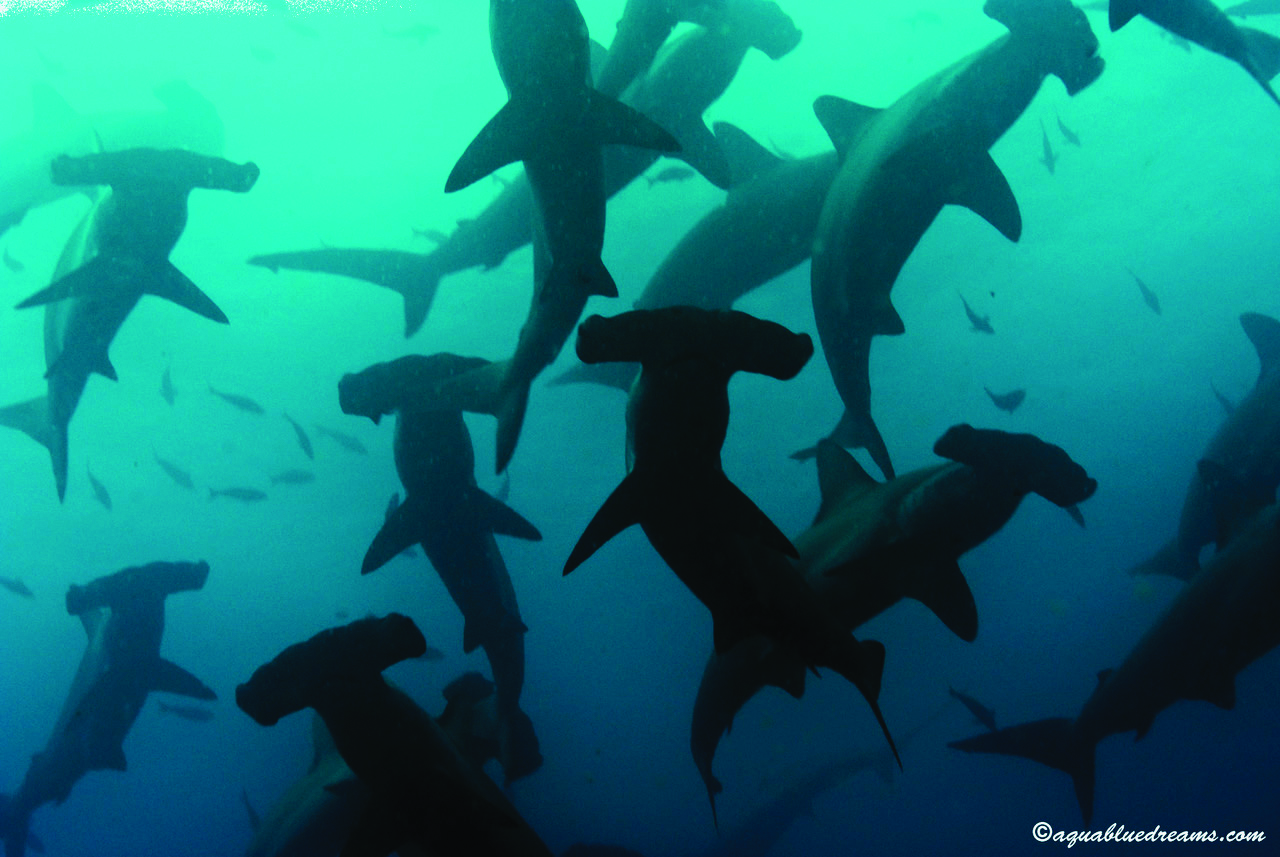
While breakfast and lunch are more casual, dinner consists of several courses of Instagram-worthy plated delicacies. Post-dinner the rooftop deck transforms into an ad-hoc cocktail bar where Alexander and his fellow vested bartenders mix superb negronis, dirty martinis, and frozen piña coladas.
Together the luxury appointments, superb F&B program and world-class staff ensure an opulent 360-degree experience that complements the harshness of this land, hand-in-white-glove.
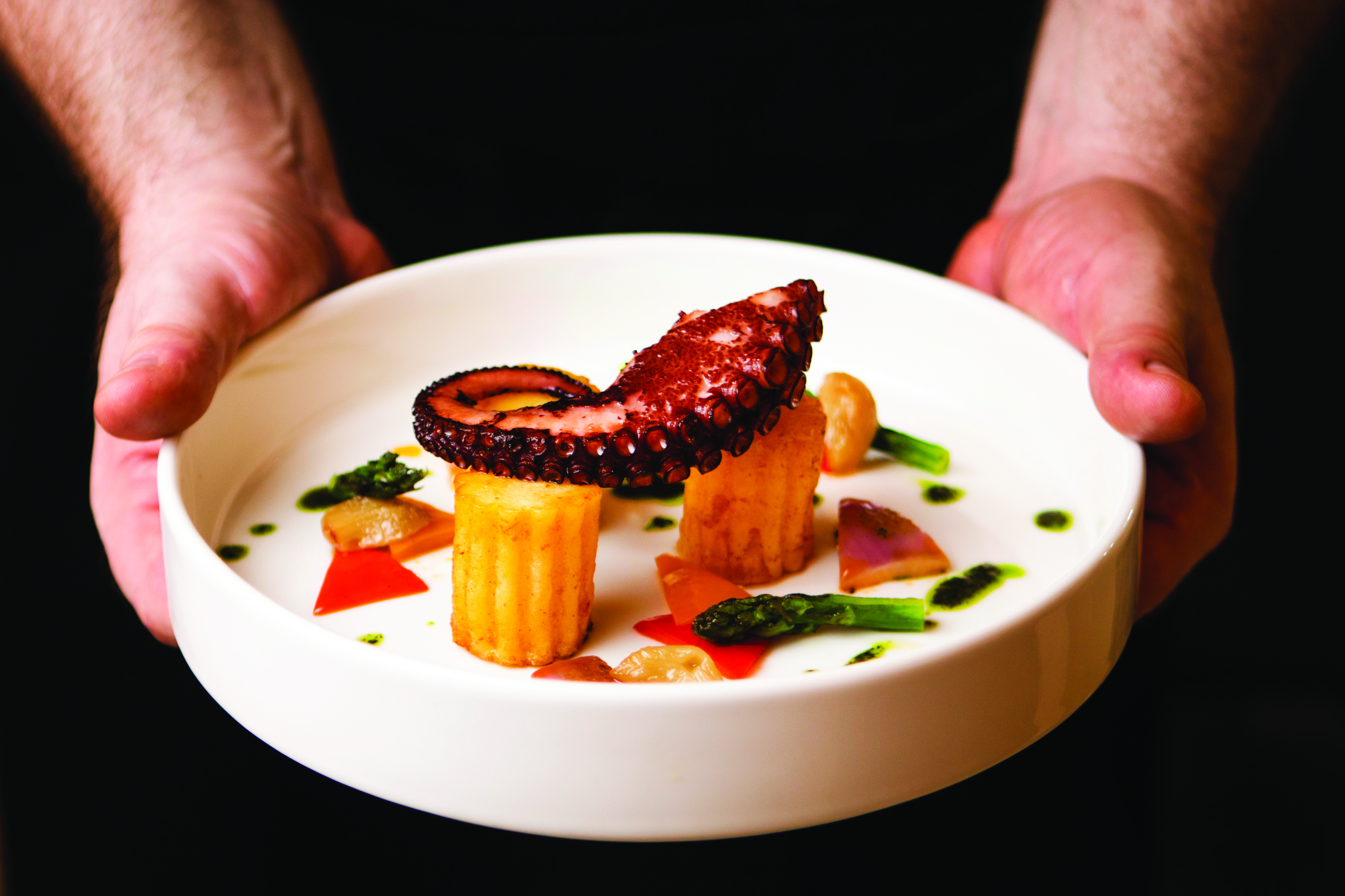
There are landscapes here that will make you contemplate God.
Of course one could book passage on a luxury yacht down the Merrimack River and still enjoy a splendid, leisurely time. So what makes the Ecoventura Evolve cruise a singular experience are, to no surprise, the Galápagos themselves.
There are landscapes that will make you contemplate God—such as the Mars-like Bartolomé, crowned by a volcano and spiked with geological spires like Pinnacle Rock, barren of nearly any flora except tequila plants dotting the ash soil. Or Isla Floreana bearded exclusively in Palo Santo trees, dripping in citrusy sap fragrant of sandalwood. Here an endemic species of bright pink flamingo patrols the brackish interior lake for shrimp with long-legged strides.
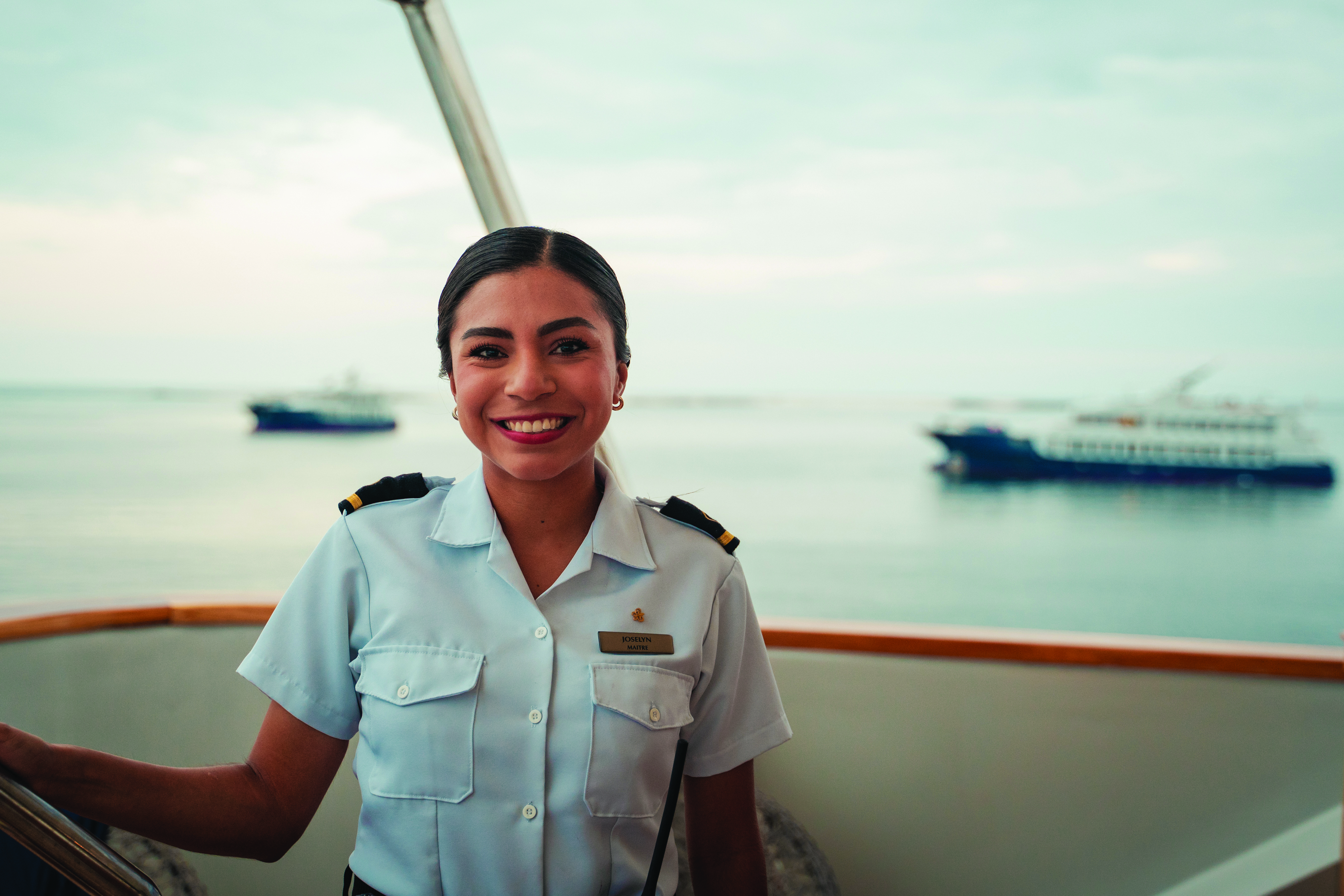
But as you might have guessed, what elevates the journey into something you’re unlikely to experience anywhere on the planet is the wildlife. Consider the world’s only tropical penguin—a colony now some 3,000 strong, the descendants of an intrepid pregnant female carried here over 10,000 miles by the frigid Humboldt current sweeping north from the Antarctic.
These skinny pioneers dive off the lava rock to swim in densely populated waters teeming with angel, yellow-fin razor and parrot fish patrolling the coral; Pacific Rim sea turtles and giant marbled, spotted eagle and diamond rays flapping across the rocks; swarming crowds of hammerhead, Galápagos, black-tipped reef, and even whale sharks looking for a meal; and dense schools of tiny fish—red, silver or blue, shimmering through the crystal water like glitter. Thank Ecuador’s diligently protected marine reserve for the abundant wildlife.
Then there are the birds, like the pirates of the air: the one seabird which never touches water—frigates instead punk other birds for their food. The male “Klepto Parasitics” puff their huge tomato red pouches to attract the fairer sex. The blue-footed booby, meanwhile, struts around flaunting giant webbed feet to attract its females.
The brighter the hue the more chance for success—consider them G-Wagons for boobies. They match their dance with a construction worker-like whistle, the females responding with nasal honks if interested. On one hike we turn a corner to witness a couple in mid-carnal act, pterodactyl eyes flashing. It’s about as close as one can possibly come to watching dinosaurs breed.
The magic in these Enchanted Isles sinks deep to their volcanic core
But the undisputed kings of the Galápagos—indeed the animal that gave this place its name—are the tortoises. On his 1570 map, Portuguese cartographer Abraham Ortelius dubbed the archipelago “Insulae de los Galopegos,” or Islands of the Tortoises.
For four million years these noble giants lived a molasses-footed life of dissolution on these remote isles, nary a predator to be found… until pirates and whalers discovered these 700-pound reptiles could live for months on open seas without food or water, providing fresh meat for long voyages. Entire islands, and therefore species of tortoise, were eviscerated in decades.
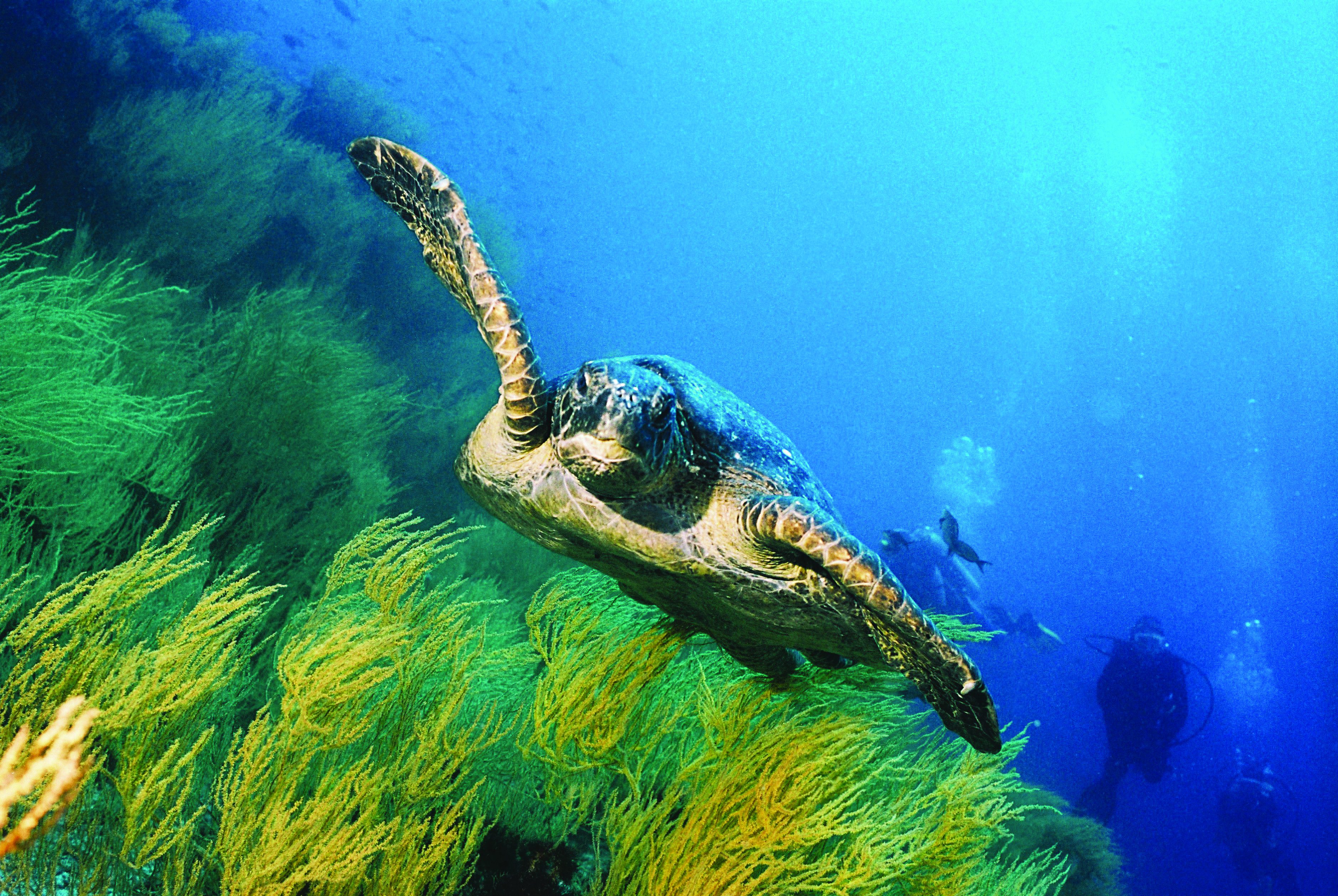
Today 11 endemic species of tortoise remain, although the origin of these monarchs remains a mystery. The mainstream guess is they rode here on “natural rafts,” or chunks of earth that broke off from the mainland 1,000-kilometers away and drifted here, unbothered by the colossal swells of the high seas—though some doubt that scenario.
Another theory is they floated here. As unlikely as that sounds, a Seychelles tortoise was found floating 200 miles in the ocean even though they cannot swim.
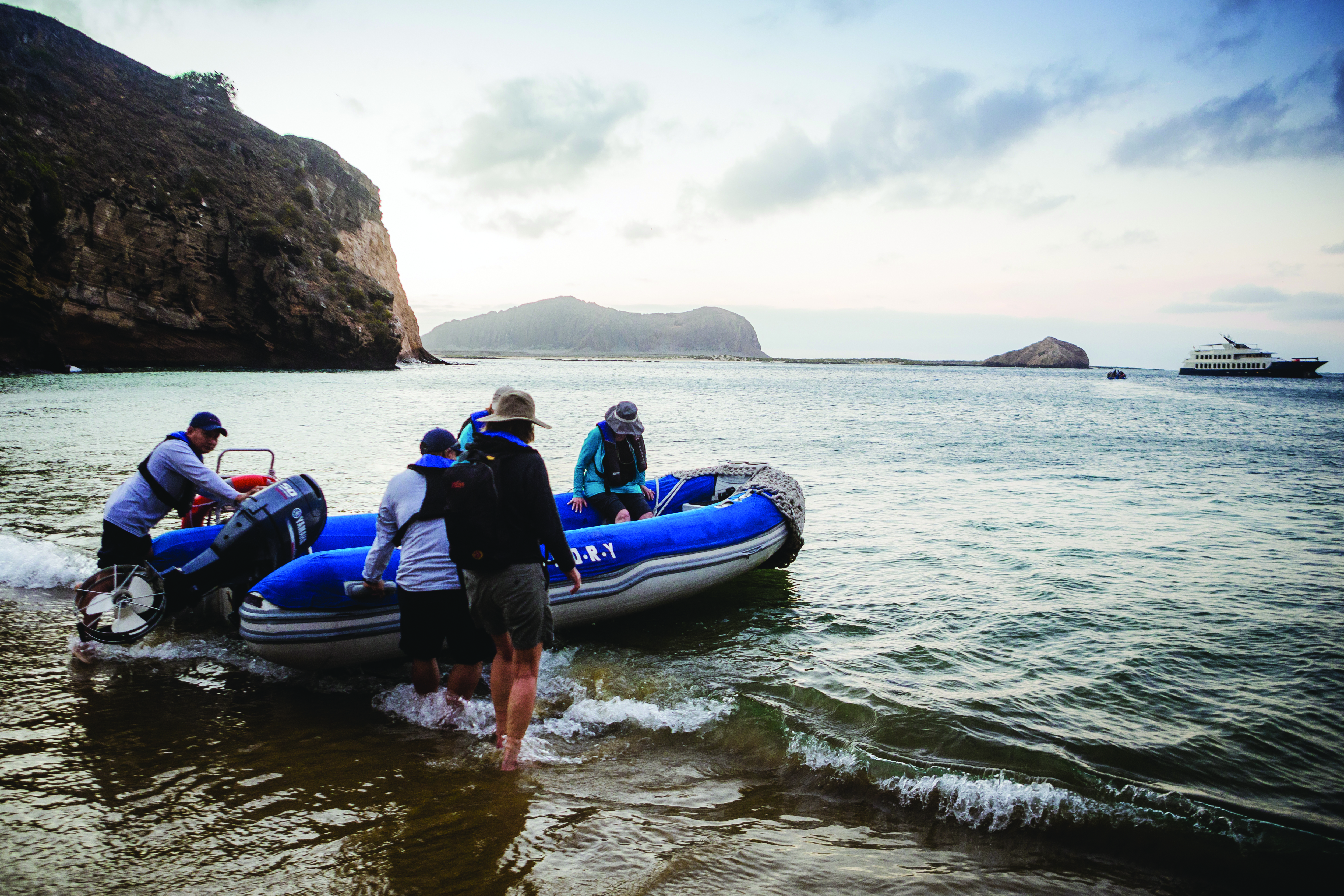
Perhaps they, along with the Galápagos’ entire coterie of impossible creatures, simply appeared here by some mysterious spell. After all, the magic in these island sinks deep to their volcanic core. It’s why in the whaling era they were known as Las Encantadas, or the Enchanted Isles.
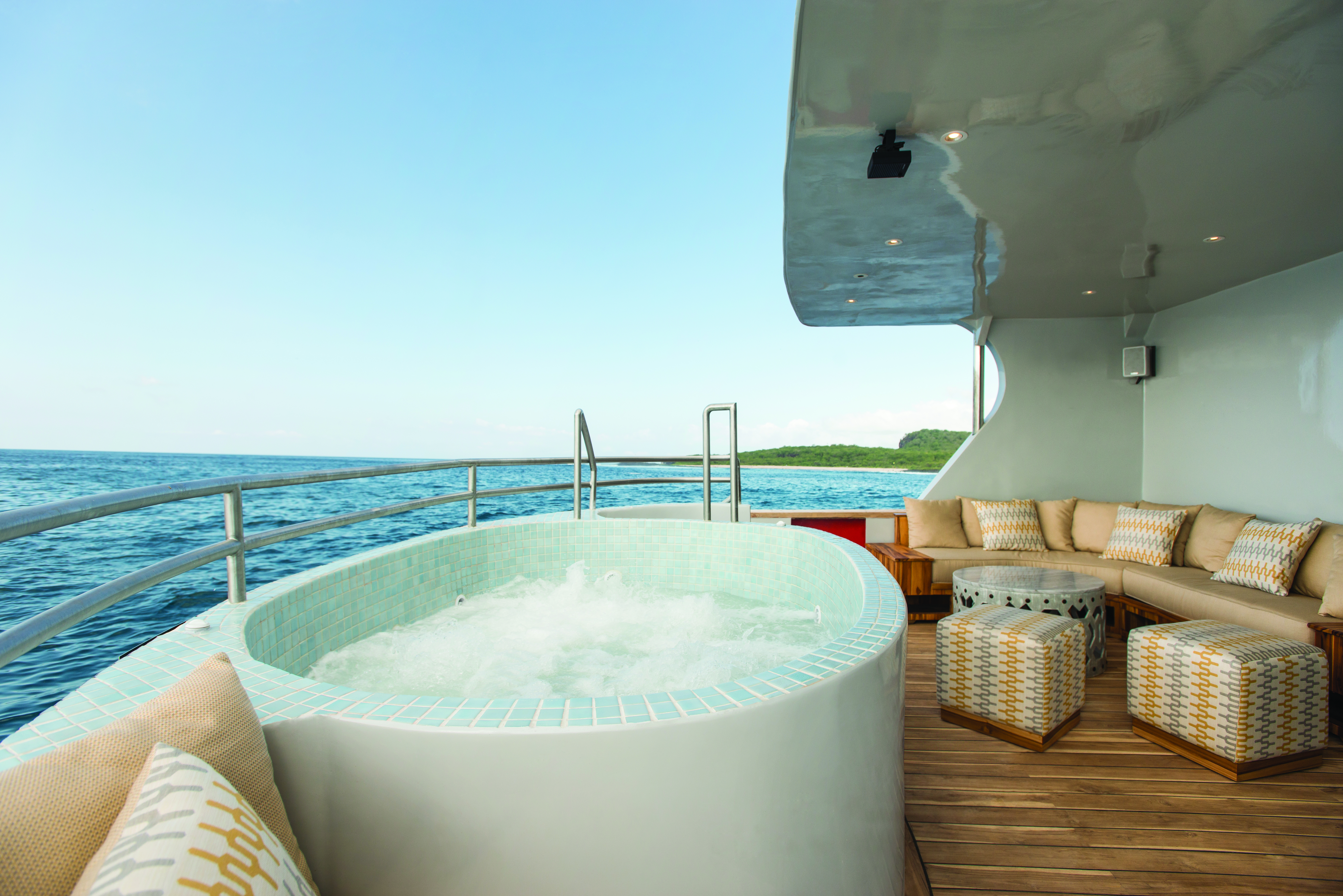
Not for their otherworldly beauty, mind you, but from the supernatural attributes sailors lent to this bizarre dreamworld. Apparently unorthodox wind and water currents pushed early navigators away, contributing to why it took so long for the far-flung archipelago to be discovered. It wasn’t until a storm knocked the Bishop of Panamá’s boat off course in 1535 that a human ever stepped foot here.
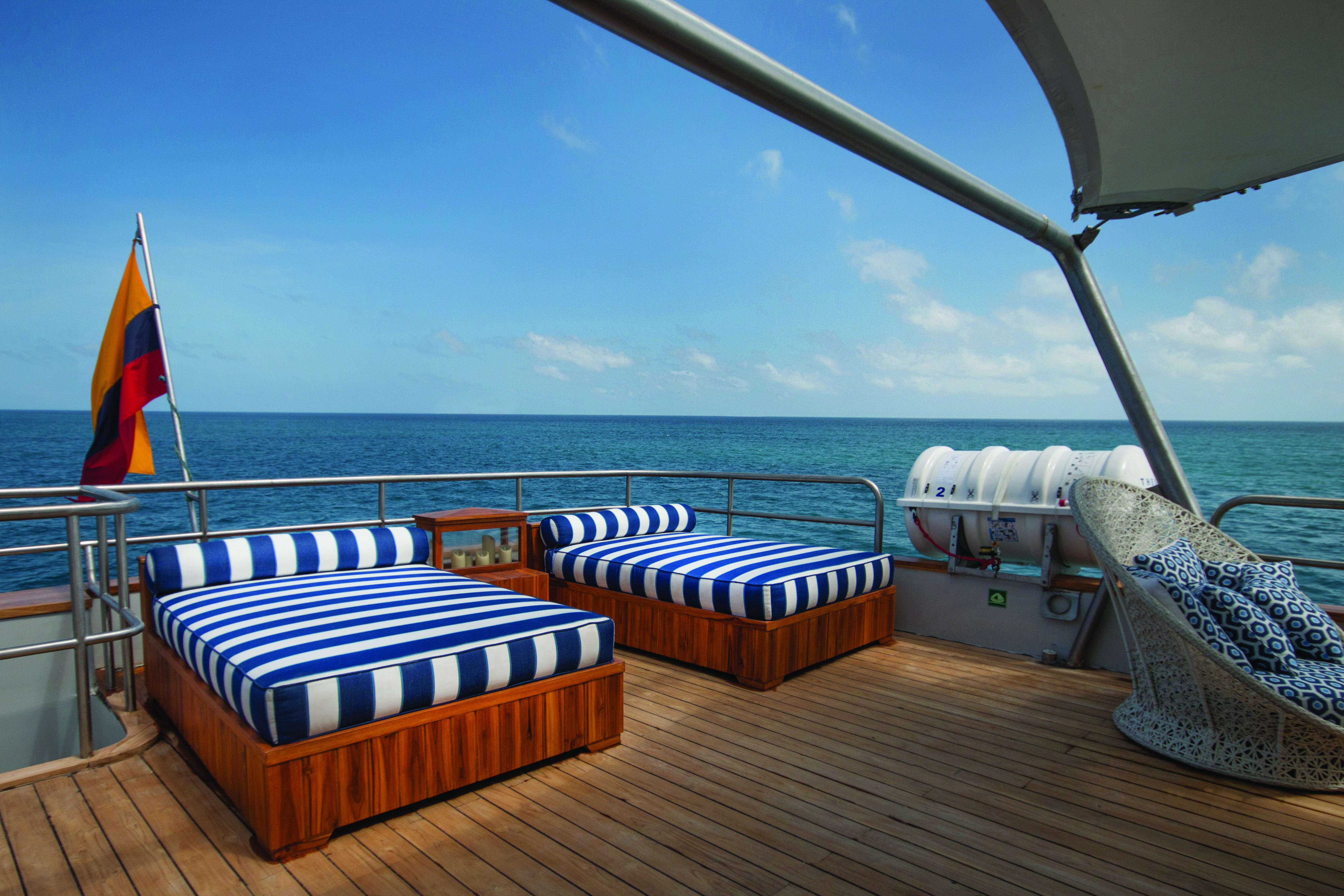
Conversely, once on the islands these same wind and current patterns make them incredibly difficult to escape—as if Homer’s sirens sing you back to shore. Be sure this dark magic persists: undoubtedly you too will feel its magnetism, a melancholic yearning calling you to return.
